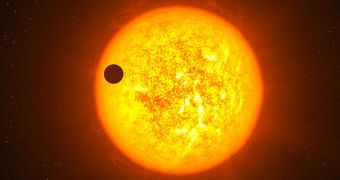Given the high number of exoplanets discovered over the past few years, it's worth taking a look at the main methods through which such celestial bodies form and develop.
Exoplanets, or extrasolar planets, is the name given to celestial bodies that orbit stars other than the Sun. These objects can exist tens to millions of light-years away from Earth.
They can develop through either co-accretion or out of protoplanetary disks, astronomers say, and each of these methods has its own, unique signature.
Co-accretion is the process through which a star and a large planet orbiting it form at the same time, from the same cloud of matter.
In this case, the mutual forces of gravity they exert on each other keep them bound in the same system, giving the impression that the exoplanet is orbiting its parent star.
In the second scenario, planets appear as matter in a protoplanetary disk collapses on itself. The disks appear around already-developed stars, and experts believe this is how our own solar system appeared.
Given both these methods for planet “production,” experts are now interested in learning which of them is dominant in the Universe, and also why.
Fortunately, we live in what astronomers call the golden age of exoplanetary research. Our telescopes have already discovered more than 400 such objects in less than 18 years, and the first direct images are already beginning to surface.
Additionally, researchers are also producing the first spectral readings of the atmosphere surrounding these bodies. This line of study can help determine how the object formed in the beginning.
According to a new paper, which appears in the online scientific journal arXiv, it would appear that out solar system is an “oddity” in space, rather than the norm.
The work, which was authored by Kitt Peak National Observatory expert Helmut Abt, shows that the general characteristics of star systems differ from the ones exhibited by our own solar system.
This oddity may be partially to thank for the fact that life exists here. Other planetary systems are desolate wastelands, either to hot or to cold to support life, Universe Today reports.
Most of the exoplanets discovered are very large, several times more so than Jupiter or Saturn. They exist either to far away from their parent star, or so close that they become tidally-locked with them.

 14 DAY TRIAL //
14 DAY TRIAL //